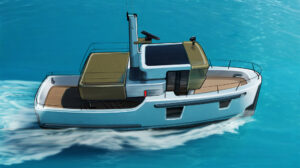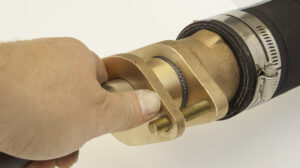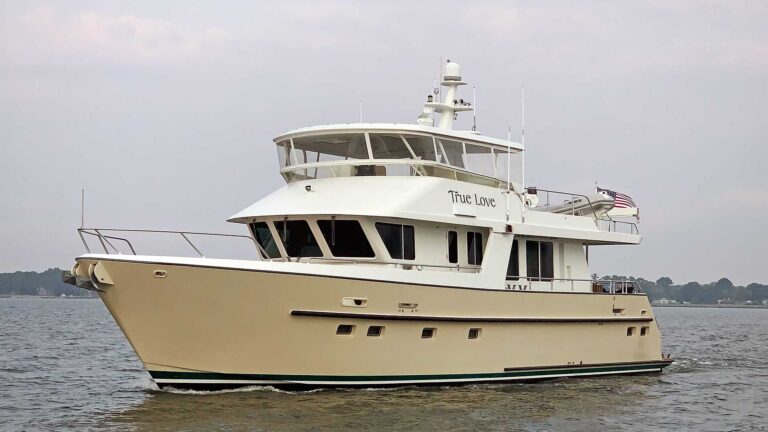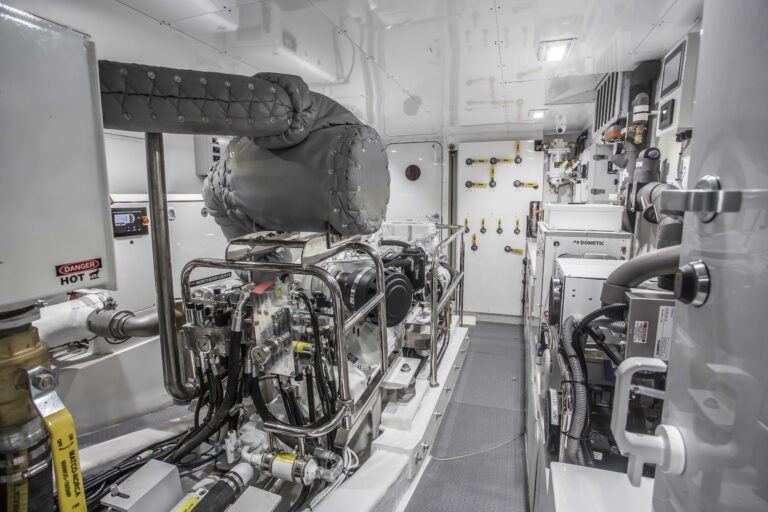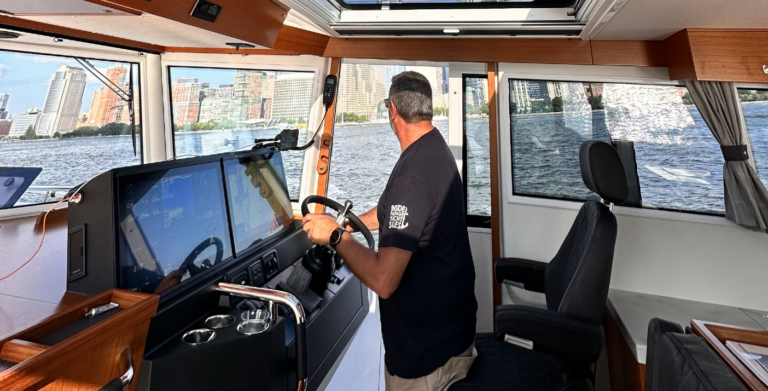Why is it possible to sit in the front seat of a 19-year-old Toyota, just 3 feet from an engine running at 2000 rpm, and feel like the environment is quieter than the one aboard most boats?
The answer to that question is complicated.
A major contributor of noise on boats is marine generators that, typically for safety reasons, run on diesel fuel. Unfortunately, a number of factors make diesel-powered gensets noisier and more prone to vibration.
Diesel fuel is heavier (it has a greater specific gravity and higher energy content per unit volume) than gasoline. Consequently, burning diesel fuel in an internal combustion engine involves a more violent release of energy. That release is, in itself, noisier than what you find in gasoline engines.
Additionally, the more powerful release of chemical energy when diesel fuel is burned in a reciprocating engine (one whose pistons reverse direction in a repeating cycle) creates more vibration than in an engine burning gasoline. Which, again, contributes to increased noise.

Whereas gasoline engines employ spark plugs to ignite the fuel-air mixture in the engine’s cylinders, diesel engines initiate their fuel burn by compressing the fuel-air mixture to such a high degree that the natural heat ignites the fuel. This process is much faster and more explosive than the slower, controlled burn in a gasoline engine. My experience is that the ignition of the fuel-air mixture in a diesel engine can make more noise than a gasoline engine suffering with a bad case of engine ping.
Last, the high level of compression reached in a diesel’s cylinders increases the forces involved with operating the engine’s pistons. This increased force also adds noise and vibration.
All of which is not to say that marine diesel generators couldn’t be quieter and vibrate less. It’s just to say that getting to a noise level seriously less than that of normal conversation, or 66 decibels, is neither easy nor inexpensive. If it were, then market demand would have elicited a solution by now.
But do not be disheartened. Yachting is, I believe, on the cusp of significantly quieting the onboard generation of electrical power.
You may remember that in 2018, I predicted a shift to a hybrid form of onboard power generation and management, one that would utilize high-output alternators mounted on a vessel’s main propulsion engines. The system would charge large-capacity battery banks that would feed the ship’s service needs when her engines were not running.
Well, I don’t mean to gloat, but that prediction is proving true. And the approach is more effective than trying to silence diesel gensets.
Most yacht propulsion engines can produce more power than needed to drive the vessel. During most of their running time, these engines could easily also drive alternators or generators of much higher capacity than the 130-amp (or less) alternator they are usually tasked to support.

The new hybrid approach uses that reserve power to supply eight or more kilowatts at 48 to 51 volts to a battery bank. Because the house batteries are charged while the yacht’s propulsion engines are running, there isn’t any significant addition to noise levels. And because the battery bank supplies ship’s service current via an inverter, there is no noise, other than the slight, easily buffered hum of the inverter.
Until recently, the most important hitch in this kind of program has been how to manage the additional loads on the propulsion engine. But now, at least one firm has introduced a system that electronically monitors the delta between the propulsion power being developed and the total potential horsepower that the engine could be producing safely. An electronically controlled clutching system applies a proportional additional load for charging the battery bank.
This hybrid approach achieves a couple of important objectives. First, it provides totally silent ship’s service power at times when silence matters most. And second, it eliminates the added weight, and the initial and maintenance costs, of separate, dedicated gensets.
Granted, there are some ancillary issues. For example, this hybrid approach works pretty seamlessly if a yacht is underway for periods long enough to charge the battery bank. But if you stay on the hook for more than a day or two, then you could find yourself having to fire up your propulsion engine to charge your batteries. Solar panels could supplement the engine’s running time; after all, the ship’s service batteries don’t care where the charging power comes from.
The bottom line is that onboard generation of electrical power for ship’s service is about to move into a new era. That development most likely will leave manufacturers of mainline marine gensets working to improve the effectiveness of their sound-deadening enclosures and exhaust-silencing systems. We might even see another look at rotary engines to drive the generator portion of the gensets.
All of which will, one way or another, ultimately benefit yachtsmen who want their electrical conveniences aboard as well as their peace and quiet. The competition will be to see whether the new hybrid systems can be produced at prices competitive with the traditional, but quieter breed of generating sets.



